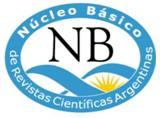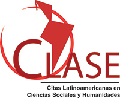Humboldt y las culturas de América: textos y contextos
Resumen
El artículo considera las ideas de Alexander von Humboldt respecto de las culturas de América a partir de un análisis detallado de Vues des cordillères et monuments des peuples indigènes de l’Amerique (París, 1810-1813), pero también incluye referencias a otros textos. Interpreta esas concepciones a partir de algunas relaciones intelectuales de Humboldt, tanto las establecidas personalmente cuanto aquellas surgidas de lecturas y vínculos diversos. Se busca enmarcar las reflexiones humboldtianas en los debates más importantes acerca de los problemas bajo estudio, en particular aquellos que marcaron el último cuarto del siglo XVIII. Gracias a estas pesquisas, se establecen algunas conclusiones provisorias respecto del método de Humboldt, su concepción del saber y sus ideas acerca de las relaciones entre diversas culturas del planeta.
Palabras clave
Texto completo:
PDFReferencias
Fuentes primarias
CARTARI, V., (1963 [1556]). Imagini degli dei degli antichi (W. KOSCHATZKY Ed.), Viena: Akademische Druck Verlagsanstalt Graz.
COOK, J., (1777). A voyage towards the South Pole and round the world, Londres: Strahan and Cadell.
COOK, J., (1799). Voyages round the World, Manchester: Sowler and Russell.
COOK, J., (1955-74). The Journals of Captain James Cook on his voyages of discovery, Cambridge: Cambridge University Press.
FORSTER, G., (1843). Sämtliche Schriften, Leipzig: F.A. Brockhaus.
FORSTER, G. (1968), Werke, Berlín: Akademie Verlag.
GERARD, H., (1867). Correspondance de François Gerard, Peintre D'Histoire, avec les artistes et les personnages célèbres de son temps, París: s. e.
HERDER, J. G. (1966 [1784]). Outlines of a Philosophy of the History of Man, Nueva York: Bergman.
HUMBOLDT, A., (1806). “Uber die urvölker von Amerika”. Neue Berlinische Monatsschrift, 15, pp. 177-207.
HUMBOLDT, A., (1849 [1807]). Ansichten der Natur, mit wissenschaftlichen Erläuterungen, Stuttgart: Cotta.
HUMBOLDT, A., (1810). Vues des cordillères et monuments des peuples indigènes de l’Amérique, París: Schoell.
HUMBOLDT, A., (1811). Essai politique sur le royaume de la Nouvelle Espagne, Paris: Schoell.
HUMBOLDT, A., (1811). Political Essay on the Kingdom of New Spain, Londres: Longman, Hurst, Rees, Orme, and Brown.
HUMBOLDT, A., (1826). Essai politique sur l’Ille de Cuba, Paris: Libraire Gide et fils.
HUMBOLDT, A., (1845-1862). Kosmos, Entwurf einer physischen Weltbeschreibung, 5 vols., Stuttgart: Cotta.
HUMBOLDT, A., (1859-1860). Reise in die Aequinoctial-Gegenden des neuen Continets, Stutgart: Cotta.
HUMBOLDT, A., (2012). Views of the Cordilleras and Monuments of the Indigenous Peoples of the Americas (V. M. KUTZINSKI and O. ETTE [Eds.]), Chicago: University of Chicago Press).
LAFITAU, J.-F., (1724). Moeurs des sauvages Ameriquains comparees aux moeurs des premiers temps, París: Saugrain l’aîne et Charles Etienne Hochereau.
MONTAIGNE, M., (1873 [1580]). Essais, París: Librairie des bibliophiles.
Fuentes secundarias
ACKERKNECHT, E.H., (1955). “Georg Forster, Alexander von Humboldt, and Ethnology”. Isis, 46, 83-95.
ΒERNAL, I., (1962). “Humboldt y la Arqueología Mexicana”. En M. O. de BOPP (Ed.), Ensayos sobre Humboldt (128-152). México D. F.: Universidad Nacional Autónoma de México.
BERMAN, R. A., (1998). Enlightenment or Empire. Colonial Discourse in German Culture, Lincoln y Londres: University of Nebraska Press.
BOURGUET, M.-N., (2017). Le monde dans un carnet. Alexander von Humboldt en Italie (1805), París: Félin.
BOWEN, M., (1981). Empiricism and geographical thought: from Francis Bacon to Alexander von Humboldt, Cambridge: Cambridge University Press.
BRADING, D., (1991). The first America: the Spanish monarchy, Creole patriots, and the liberal state, 1492-1867, Nueva York: Cambridge University Press.
BROWNE, C. A., (1944). “Alexander von Humboldt as historian of science in Latin America”. Isis, 34, pp. 133-39.
BROWNE, J., (1983). The Secular Ark. Studies in the History of Biogeography, New Haven: Yale University Press.
BRUHNS, K., (1872). Alexander von Humboldt. Eine wissenschaftliche Biographie, 3 vols., Leipzig: Brockhaus.
CAÑIZARES ESGUERRA, J., (2001). How to Write the History of the New World, Stanford: Stanford University Press.
CAÑIZARES ESGUERRA, J., (2006). “How Derivative was Humboldt? Microcosmic Nature Narratives in Early Modern Spanish America and the (Other) Origins of Humboldt’s Ecological Sensibilities”. En J. CAÑIZARES-ESGUERRA, Nature, Empire, and Nation. Explorations of the History of Science in the Iberian World (pp. 112-128). Stanford: Stanford University Press.
CASTILLO, S.; DETTELBACH, M.; CAÑIZARES-ESGUERRA, J.; DASSOW WALLS, L., (2011). “The Passage to Cosmos: a symposium”. Studies in Travel Writing, 15, 1, pp. 61-75, DOI: 10.1080/13645145.2011.537509
CHAMBERS, D. W., (1996). “Centre looks at periphery: Alexander von Humboldt's account of Mexican Science and Technology”. Journal of Iberian and Latin American Research, 2, 1, pp. 94-113, DOI: 10.1080/13260219.1996.10431806
COVARRUBIAS, J. E. y SOUTO MANTECÓN, M., (Eds.) (2012). Economía, ciencia, y política: Estudios sobre Alexander von Humboldt a 200 años del ensayo político sobre el reino de la Nueva España, México D. F.: Universidad Nacional Autónoma de México.
DASSOW WALLS, L., (2009). The Passage to Cosmos: Alexander von Humboldt and the Shaping of America, Chicago: University of Chicago Press.
DE CERTEAU, M. y HOVDE, J., (1980). “Writing vs. Time: History and Anthropology in the Works of Lafitau”. Yale French Studies, 59, pp. 37-64.
DETTELBACH, M., (1996a). “Humboldtian Science”. En N. JARDINE, J. A. SECORD y E. C. SPARY (Eds.), Cultures of Natural History (pp. 287-304). Cambridge: Cambridge University Press.
DETTELBACH, M., (1996b). “Global Physics and Aesthetic Empire: Humboldt’s Physical Portrait of the Tropics”. En D. P. MILLER y P. H. REILL (Eds.), Visions of Empire: Voyages, Botany, and Representations of Nature (pp. 258-292). Cambridge: Cambridge University Press.
ETTE, O., (2012). “TransTropics: Alexander von Humboldt and hemispheric construction”. En V. KUTZINSKI, O. ETTE y L. D. WALLS (Eds.), Alexander von Humboldt and the Americas (pp. 209-236). Berlín: Verlag Walter Frey.
FONER, P. S., (1983). “Alexander Von Humboldt on Slavery in America”. Science & Society, 47, 3, pp. 330-342.
GARRIDO, E., (2019). Arte y ciencia en la pintura del paisaje, Madrid: Doce Calles.
GERBI, A., (1973). The Dispute of the New World, Pittsburgh: University of Pittsburgh Press.
GINZBURG, C. (2006). “Semejanzas de familia y árboles de familia: dos metáforas cognoscitivas”. Contrahistorias, 7, pp. 17-36.
GOLDSTEIN, J., (2019). Georg Forster. Voyager, Naturalist, Revolutionary, Chicago: University of Chicago Press.
GOULD, S. J., (1989). “Church, Humboldt, and Darwin: The Tension and Harmony of Art and Science”. En F. KELLY (Ed.), Frederick Edwin Church (pp. 94-107). Washington D. C.: Smithsonian Institution Press.
JACKSON, S. J., (2009). “Introduction”. En S. J. JACKSON, Essay on the Geography of Plants (pp. 1-46). Chicago: University of Chicago Press.
KEEN, B., (1997). “Alexander von Humboldt”. En M. S. WERNER (Ed.), Encyclopaedia of Mexico (pp. 660 y ss.). Chicago: Fitzroy Dearborn.
KIRCHHOFF, P., (1962). “La aportación de Humboldt al estudio de las antiguas civilizaciones americanas: un modelo y un programa”. En M. O. de BOPP (Ed.), Ensayos sobre Humboldt (pp. 89-103). México D. F.: Universidad Nacional Autónoma de México.
KOSSOK, M., (1969). “Alexander von Humboldt und der historische Ort der Unabhängigkeitsrevolution Lateinamerikas”. En W. HARTKE (Ed.), Alexander von Humboldt. Wirkendes Vorbild fur Fortschritt und Befreiung der Menschheit. Festschrift aus Anlass sienes 200. Geburtstages (pp. 1-52). Berlín: Akademie.
KÜGELGEN KROPFINGER, H., (1983). “El frontispicio de François Gerard para la obra de viaje de Humboldt y Bonpland”. Jahrbuch für Geschichte Lateinamerikas, 20, pp. 575-616.
KUTZINSKI, V., ETTE, O. y WALLS, L. D., (Eds.) (2012). Alexander von Humboldt and the Americas, Berlin: Verlag Walter Frey.
LEON-PORTILLA, M., (1962). “Humboldt, investigador de los códices y la cosmología náhuatl”. En M. O. de BOPP (Ed.), Ensayos sobre Humboldt (pp. 133-148). México D. F.: Universidad Nacional Autónoma de México.
LUBRICH, O., (2001). “Como antiguas estatuas de bronce. Sobre la disolución del clasicismo en la Relación histórica de un viaje a las regiones equinocciales del nuevo mundo, de Alejandro de Humboldt”. Revista de Indias, LXI, 223, pp. 749-763.
LUBRICH, O., (2002). “Egipcios por doquier: Alejandro de Humboldt y su visión orientalista de América”. Humboldt in Netz, 5, pp. 52-75.
MANTHORNE, K. E., (1989). Tropical Renaissance: North America Artists Exploring Latin America, 1839-1879, Washington D.C.: Smithsonian Institution Press.
MASON, P., (2001). The Lives of Images, Londres: Reaktion.
MATHEWSON, K., (2006). “Alexander von Humboldt’s image and influence in North American geography”. Geographical Review, 96, 3, pp. 416-38.
ΜAYΟ, R. S., (1969). Herder and the Beginnings of Comparative Literature, Chapel Hill: University of North Carolina Press.
MAYR, E., (1982). The growth of biological thought, Cambridge: Harvard University Press.
MINGUET, C., (1969). Alexandre de Humboldt. Historien et géographe e l’Amérique espagnole (1799-1804), París: Faculté des lettres et sciences humaines.
MOOK, A. (2012), Die freie Entwicklung innerlicher Kraft. Die Grenzen der Anthropologie in den frühen Schriften der Brüder von Humboldt, Göttingen: V&R unipress.
PODGORNY, I., (2003). “Medien der Archäologie”, Archiv für Mediengeschichte, 3, pp. 167-179.
PRATT, M. L., (1992). Imperial Eyes: Travel Writing and Transculturation, Nueva York: Routledge.
REBOK, S., (2001). “Alexander von Humboldt y el modelo de la Historia Natural y Moral”. Humboldt in Netz, II, 3. DOI: https://doi.org/10.18443/21
SACHS, A., (2006). The Humboldt Current: Nineteenth-Century Exploration and the Roots of American Environmentalism, Nueva York: Viking.
SCHWENINGER, L., (2016). “A Return to Nature’s Order: Indigenous Peoples and the Politics of Alexander von Humboldt’s Political Essay on the Kingdom of New Spain”, ELOHI , 9, DOI: 10.4000/elohi.1061.
SEBASTIANI, S., (2014). “What constituted historical evidence of the new world? Closeness and distance in William Robertson and Francisco Javier Clavijero”. Modern Intellectual History, 11, 3, pp. 675-693.
THOMPSON, J. E. S., (1972). A Commentary on the Dresden Codex: A Maya Hieroglyphic Book, Philadelphia: American Philosophical Society.
WALLS, L. D., (2009), The Passage to Cosmos: Alexander von Humboldt and the Shaping of America, Chicago: University of Chicago Press.
WULF, A., (2015). The Invention of Nature. Alexander von Humboldt’s New World, New York: Knopf.
WITTKOWER, R., (1938-9), “Transformations of Minerva in Renaissance Imagery”. Journal of the Warburg Institute, 2, 3, pp. 194-205.
ZEUSKE, M., (2005). “Alexander von Humboldt y la comparación de las esclavitudes de las Américas”. Humboldt in Netz, 6, 11, 65-90.
Enlaces refback
- No hay ningún enlace refback.
Copyright (c) 2020 Magallánica : revista de historia moderna

Este obra está bajo una licencia de Creative Commons Reconocimiento-NoComercial-CompartirIgual 4.0 Internacional.
 | Magallánica : Revista de Historia Moderna es editada por el Grupo de Investigación en Historia de Europa Moderna de la Facultad de Humanidades de la Universidad Nacional de Mar del Plata y por la Red de Historia Moderna ISSN 2422-779X (en línea)
|
La Dirección no se responsabiliza por las opiniones vertidas en los artículos firmados. | |
Resultados de evaluación: Magallánica... es evaluada por:
Magallánica...se encuentra en las siguientes bases de datos:
Miembro de:
| |



























